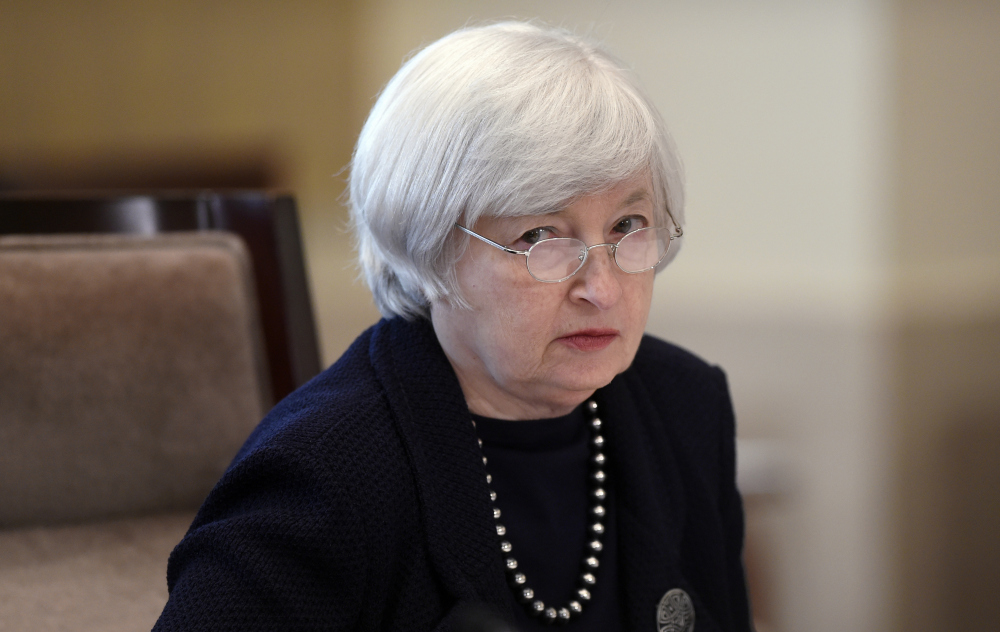Will the U.S. Fed Need to be ‘Patient’ for a ‘Considerable Period’?

Please note that we are not authorised to provide any investment advice. The content on this page is for information purposes only.
The Federal Reserve upgraded its assessment of the labor market, and changed the future guidance from “considerable time” to “can be patient in beginning to normalize the stance of monetary policy.” The statement also draws a distinction between market-based measures of inflation expectations, which have fallen, and survey-based measures, which are stable. We expect Yellen to indicate that the change in wording is not a change of intent.
The Federal Reserve upgraded its assessment of the labor market, and changed the future guidance from “considerable time” to “can be patient in beginning to normalize the stance of monetary policy.” The statement also draws a distinction between market-based measures of inflation expectations, which have fallen, and survey-based measures, which are stable. We expect Yellen to indicate that the change in wording is not a change of intent.
There were three dissents: Fisher and Plosser from the hawkish side and Kocherlakota from the dovish side. Fisher is not advocating an immediate hike, as are the dissents at the BOE, but rather he thinks the date of the first hike has moved up since October. Plosser also did not favor an immediate hike, but did not believe the “passage of time” should be “a key element in its forward guidance.” Kocherlakota is more concerned about the market-based measures of inflation expectations.
The stock market extended its rally. The yield curve steepened as the long end of the curve retreated, while the short-end rallied. The dollar eased, paring some of its earlier gains.
The Federal Reserve cut its inflation and unemployment forecasts. It sees faster improvement in the labor market and slower improvement in inflation. The Fed funds forecasts were trimmed (1.125% for the end of 2015 vs 1.38%) and 2.5% for the end of 2016 (from 2.88%). Fifteen of the Federal Reserve members now see a hike in 2015 (up from 14 in September) and two see the first hike in 2016.
Once again, the Federal Reserve is looking past market volatility. It looked past the October volatility as well. The discussion about it may be in the minutes again.
Many economists, including Krugman, want to talk about what the Federal Reserve ought to do. It makes for interesting op-ed pieces and wonderful discussions. However, what we are interested is not what the Fed ought to do in some normative sense but what it is likely to do.
There are three reasons why we think the Federal Reserve will raise rates next year. First, by the middle of next year, barring a significant surprise, the Fed will be closer to its mandates. Remember that the Fed has three mandates: price stability, full employment and financial stability. It will be closer to full employment in six to nine months. Near zero short-term interest rates may continue to threaten financial stability.
The price stability goal, defined as 2% in the core PCE deflator, has not been reached, but the proximity of the other two goals needs to be taken into account. Recall too that the Federal Reserve argues that the easing of its asset purchases lies in the stock of holdings not in the flow or buying of new assets. This means that although the asset purchases are over, the Fed policy is still as easy as it has ever been.
Second, the way the Fed conducted the tapering operation was a dress rehearsal for the rate hike. The Fed said what they were going to do and then waited even a bit longer to start the tapering. It then tapered as it said it would. It did not let the contraction in Q1 stop. Nor did the acceleration of job growth spur the Fed into accelerate it tapering. This speaks to Fed’s transparency and credibility. This approach is also important to reduce the chance that a Fed rate hike triggers destabilizing capital flows. The Fed’s leadership has continued to signal the likelihood the first hike around the middle of 2015. It is signaling investors and countries prepare themselves accordingly.
Third, the near-zero Fed funds rate is an emergency setting. The Federal Reserve needs to think 1-2 years out. It needs to re-activate conventional monetary policy tools to prepare for the eventual end of the business cycle, which is already beyond the average age of a US cyclical expansion. The way to do this is to lift the Fed funds target. Otherwise, at the end of the business cycle the Fed would be forced to return to asset purchases, which it does not want to do.
This point could be parodied by casting it as Fed to raise rates so they can cut them. However, this does not do the argument justice. Policy makers need to maximize their policy options. The emergency setting for Fed funds rate reduces its options. Calling the Fed Chair Jean-Claude Yellen, as Krugman has, is not fair. The US economy is considerably stronger than the euro area in 2008 or 2011. The financial system is healthier and the labor market, however measured, is stronger.
Fed Takes Another Step toward Normalization is republished with permission from Marc to Market




